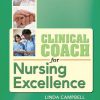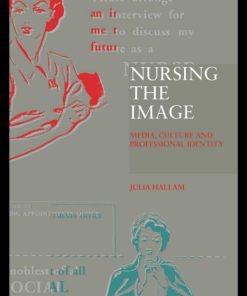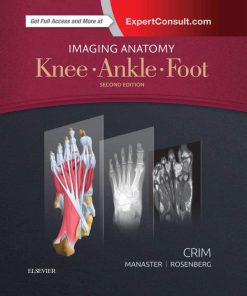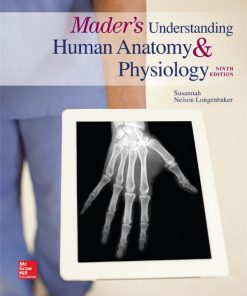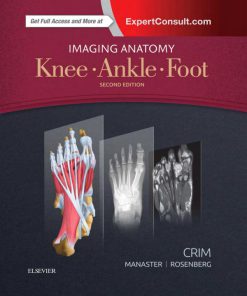Understanding Human Anatomy and Pathology An Evolutionary and Developmental Guide for Medical Students 1st Edition by Rui Diogo, Drew Noden, Christopher Smith, Julia Molnar, Julia Boughner, Claudia Alexandra Amorim Barrocas, Joana Araujo Bruno ISBN 1498753841 9781498753845
$50.00 Original price was: $50.00.$25.00Current price is: $25.00.
Authors:Rui Diogo; Drew M Noden; Julia C. Boughner; Christopher M Smith; Julia Molnar; Claudia Alexandra Amorim Barrocas; Joana Araujo Bruno , Series:Anatomy [125] , Tags:Medical; Anatomy & Physiology , Author sort:Diogo, Rui & Noden, Drew M & Boughner, Julia C. & Smith, Christopher M & Molnar, Julia & Barrocas, Claudia Alexandra Amorim & Bruno, Joana Araujo , Ids:9781498753845 , Languages:Languages:eng , Published:Published:Dec 2016 , Publisher:CRC Press, Taylor & Francis Group , Comments:Comments:Understanding Human Anatomy and Pathology: An Evolutionary and Developmental Guide for Medical Students provides medical students with a much easier and more comprehensive way to learn and understand human gross anatomy by combining state-of-the-art knowledge about human anatomy, evolution, development, and pathology in one book. The book adds evolutionary, pathological, and developmental information in a way that reduces the difficulty and total time spent learning gross anatomy by making learning more logical and systematic. It also synthesizes data that would normally be available for students only by consulting several books at a time. Anatomical illustrations are carefully selected to follow the style of those seen in human anatomical atlases but are simpler in their overall configuration, making them easier to understand without overwhelming students with visual information. The book’s organization is also more versatile than most human anatomy texts so that students can refer to different sections according to their own learning styles. Because it is relatively short in length and easily transportable, students can take this invaluable book anywhere and use it to understand most of the structures they need to learn for any gross anatomy course.
Understanding Human Anatomy and Pathology An Evolutionary and Developmental Guide for Medical Students 1st Edition by Rui Diogo, Drew M. Noden, Christopher M. Smith, Julia Molnar, Julia C. Boughner, Claudia Alexandra Amorim Barrocas, Joana Araujo Bruno – Ebook PDF Instant Download/Delivery. 1498753841, 978-1498753845
Full download Understanding Human Anatomy and Pathology An Evolutionary and Developmental Guide for Medical Students 1st Edition after payment
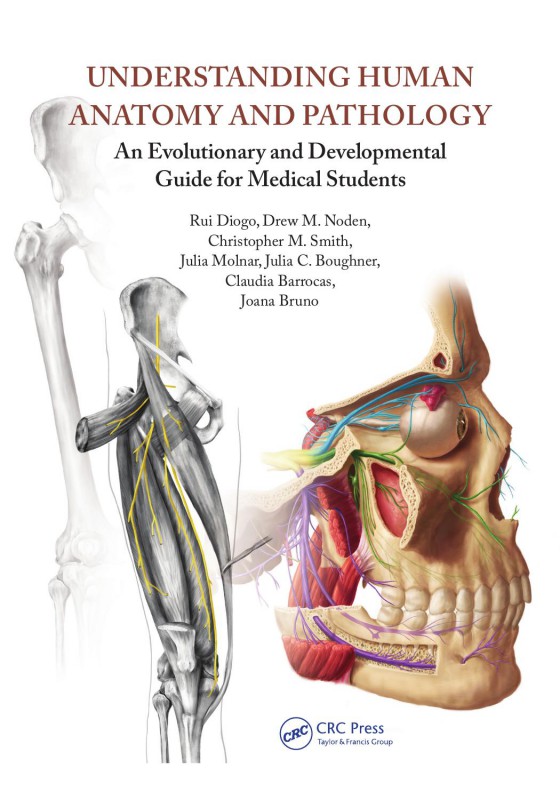
Product details:
ISBN 10: 1498753841
ISBN 13: 978-1498753845
Author: Rui Diogo, Drew M. Noden, Christopher M. Smith, Julia Molnar, Julia C. Boughner, Claudia Alexandra Amorim Barrocas, Joana Araujo Bruno
Understanding Human Anatomy and Pathology: An Evolutionary and Developmental Guide for Medical Students provides medical students with a much easier and more comprehensive way to learn and understand the gross anatomy and variations of our body by combining, for the first time, state-of-the-art knowledge about human anatomy, evolution, development, and pathology in one book, synthesizing data that would normally be available for students only by consulting several books at a time.
The book adds evolutionary, pathological, and developmental information in a way that reduces the difficulty and total time spent learning gross anatomy by making learning more logical and systematic, and understanding the ultimate reasons about why our body is as it is, and why we have certain pathologies and musculoskeletal injuries.
The anatomical illustrations are particularly excellent, and clearly a major strength of the book. They were done by a unique team of four multi-awarded, young scientific illustrators, and are carefully selected to follow the style of those seen in human anatomical atlases, but are simpler in their overall configuration, making them easier to understand without overwhelming students with visual information.
The book’s organization is also more versatile than most human anatomy texts so that students can refer to different sections according to their own learning styles, being able to learn either by focusing on different regions of the body or on different groups of structures/types of tissues.
Because it is relatively short in length and easily transportable, students can take this invaluable book anywhere and use it to study and understand most of the structuresthey need to learn for any gross anatomy course. By providing, for the first time, an unique combination of evolutionary, comparative, anatomical, developmental and pathological information, the book will also be a unique source for evolutionary and developmental biologists, comparative anatomists, functional morphologists, biological anthropologists, pathologists, and medical researchers that are interested to understand the origin of the human body and its variations, as well as human congenital malformations
Understanding Human Anatomy and Pathology An Evolutionary and Developmental Guide for Medical Students 1st Table of contents:
Chapter 1: About the Book
Chapter 2: Introduction
- 2.1 Conserved Features of Vertebrate Embryology
- 2.2 Causes and Mechanisms of Developmental Pathologies
- 2.3 A Holistic Approach to Anatomy
Figures
- 2.1: Human anatomical position
- 2.2: Human in a quadrupedal posture
- 2.3: Limb anatomy of a salamander
- 2.4: Comparison of anatomical positions
- 2.5: Stages of human embryology and limb rotation
Chapter 3: Head and Neck
- 3.1 Development and Organization of the Head and Neck
- 3.1.1 Migration of Cranial Neural Crest Cells
- BOX 3.1: Why not just use mesoderm for the skull and jaws?
- BOX 3.2: Developmental connection between head and heart muscles
- 3.2 Head and Neck Skeletal System
- 3.2.1 Cranium (Calvaria, Basicranium, Anterior Cranium, etc.)
- 3.2.2 Mandible
- 3.2.3 Neck
- 3.3 Head and Neck Neurovascular System
- 3.3.1 Nerves (Olfactory, Optic, Facial, etc.)
- 3.3.2 Blood Vessels (Arteries, Veins)
- 3.4 Head and Neck Muscular System
- 3.4.1 Muscles of the 1st, 2nd, and More Caudal Branchial Arches
- 3.4.2 Extraocular Muscles
- 3.5 Summary of Head and Neck Musculoskeletal, Neurovascular, and Other Structures
- 3.5.1 Anterior Triangle of the Neck and Thyroid Gland
- 3.5.2 Posterior Triangle of the Neck
- 3.5.3 Root of the Neck
- 3.5.4 Face, Scalp, and Parotid Region
- 3.5.5 Craniovertebral Joints and Retropharyngeal Space
- 3.5.6 Orbit, Pharynx, Nasal Cavity, Larynx, and Ear
Chapter 4: Upper Limb
- 4.1 Upper Limb Skeletal System
- 4.1.1 Pectoral Girdle, Shoulder Joint, Elbow, Forearm, Wrist, and Hand
- BOX 4.1: Concepts of postcranial musculoskeletal development
- BOX 4.3: Evolution and pathology of the shoulder
- 4.2 Upper Limb Neurovascular System
- 4.2.1 Nerves (Brachial Plexus, Arm, Forearm, Hand)
- 4.2.2 Blood Vessels
- 4.3 Upper Limb Muscular System
- 4.3.1 Muscles of Pectoral Girdle, Arm, Forearm, Hand
Chapter 5: Lower Limb
- 5.1 Lower Limb Skeletal System
- 5.1.1 Pelvis, Hip, Thigh, Knee, Leg, Ankle, Foot
- BOX 5.1: Achondroplasia
- 5.2 Lower Limb Neurovascular System
- 5.2.1 Nerves
- 5.2.2 Blood Vessels
- 5.3 Lower Limb Muscular System
- 5.3.1 Muscles of Gluteal Region, Thigh, Leg, Foot
Chapter 6: Trunk
- 6.1 Trunk Skeletal System
- BOX 6.1: Evolution of Hox genes
- BOX 6.2: Formation and ossification of vertebrae and ribs
- 6.2 Trunk Neurovascular System
- BOX 6.4: Concepts in cardiovascular evolution
- 6.3 Trunk Muscular System
- 6.3.1 Back Muscles
- 6.3.2 Suboccipital Muscles
Back Matter
- Suggested Readings
- For All Chapters
- For Introduction
- For Head
- For Upper Limb
- For Lower Limb
- For Trunk
People also search for Understanding Human Anatomy and Pathology An Evolutionary and Developmental Guide for Medical Students 1st:
mader’s understanding human anatomy & physiology 10th edition
borrow mader’s understanding human anatomy & physiology
how it works understanding human anatomy
understanding human anatomy and physiology by william davis
why is an understanding of human anatomy



